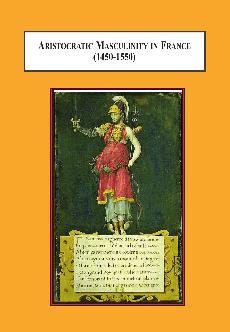This is our backup site. Click here to visit our main site at MellenPress.com
Aristocratic Masculinity in France (1450-1550): From Knight to Courtier

| Author: | Darrin Cox | |
| Year: | 2012 | |
| Pages: | 368 | |
| ISBN: | 0-7734-2927-1 978-0-7734-2927-7 | |
| Price: | $239.95 | |
Looks at how masculinity is depicted in knightly memoirs in 15th century France. The meaning of male and female sexuality was constructed on a hierarchical scale of one single gender, and not a binary opposition of two biologically distinct bodies. The author shows numerous examples of this trend in the knightly memoirs that support this understanding. By the end of the sixteenth century, it is evident that a gender crisis did not occur among noble warriors, since men who styled themselves knights merely adopted many of the outward forms of the courtier while retaining a right to violence as both a mark of nobility and signifier of manhood.
Reviews
“This book offers a great deal to early modern historians. It engages and intersects with some of the most prominent historiographical issues of our day. The arguments advanced here fundamentally challenge several of them, and though they may be contested, that they are grounded so firmly in an extensive evidential base demands that they be weighed with care and met with further research. One can hardly ask for more from a book.”
-Prof. James R. Farr
Purdue University
“…the book’s argument is not prone to speculation and offers detailed scholarship that breaks new ground.”
-Prof. Dominique Hoche,
West Liberty State University
“…shows the diligent, meticulous work of a consummate researcher who has taken all of these variables into account and pieced the portrait of this era together like a detective reconstructing a criminal act.”
-Prof. John Lennox,
Purdue University
-Prof. James R. Farr
Purdue University
“…the book’s argument is not prone to speculation and offers detailed scholarship that breaks new ground.”
-Prof. Dominique Hoche,
West Liberty State University
“…shows the diligent, meticulous work of a consummate researcher who has taken all of these variables into account and pieced the portrait of this era together like a detective reconstructing a criminal act.”
-Prof. John Lennox,
Purdue University
Table of Contents
Abstract i
Foreword by James R. Farr iii
Acknowledgements vii
Chapter 1 Introduction 1
Foundations of Gender 10
Shifting the Focus 20
Establishing Parameters 33
Chapter 2 Chivalric Influences 45
Content and Context: A Soldierly Focus 48
Impact of Humanism: Arms over Letters 55
Feudal, Religious, or Romantic Chivalry? 66
Chapter 3 Education 85
Ages, Stages, and Categories 87
Humanist Critique and Contextual Change 100
Adaptation 111
Chapter 4 Courtesy and Chivalry 119
The Lessons of Courtesy 126
A Perceptible Change 138
Chapter 5 Men at Work 151
War as Sport 157
The Masculinity of War 171
The Changing Face of War 192
Chapter 6 Friends, Enemies, and Others 205
Behavior between Friends 211
“Unnatural” Friendship 225
Behavior Between Enemies 240
Chapter 7 Men, Women, and Gender 253
The Beast Within 259
An Idle Comparison 267
The Changing Perception of Noble Women 278
Chapter 8 Conclusions 295
Bibliography 319
Index 343
Foreword by James R. Farr iii
Acknowledgements vii
Chapter 1 Introduction 1
Foundations of Gender 10
Shifting the Focus 20
Establishing Parameters 33
Chapter 2 Chivalric Influences 45
Content and Context: A Soldierly Focus 48
Impact of Humanism: Arms over Letters 55
Feudal, Religious, or Romantic Chivalry? 66
Chapter 3 Education 85
Ages, Stages, and Categories 87
Humanist Critique and Contextual Change 100
Adaptation 111
Chapter 4 Courtesy and Chivalry 119
The Lessons of Courtesy 126
A Perceptible Change 138
Chapter 5 Men at Work 151
War as Sport 157
The Masculinity of War 171
The Changing Face of War 192
Chapter 6 Friends, Enemies, and Others 205
Behavior between Friends 211
“Unnatural” Friendship 225
Behavior Between Enemies 240
Chapter 7 Men, Women, and Gender 253
The Beast Within 259
An Idle Comparison 267
The Changing Perception of Noble Women 278
Chapter 8 Conclusions 295
Bibliography 319
Index 343
